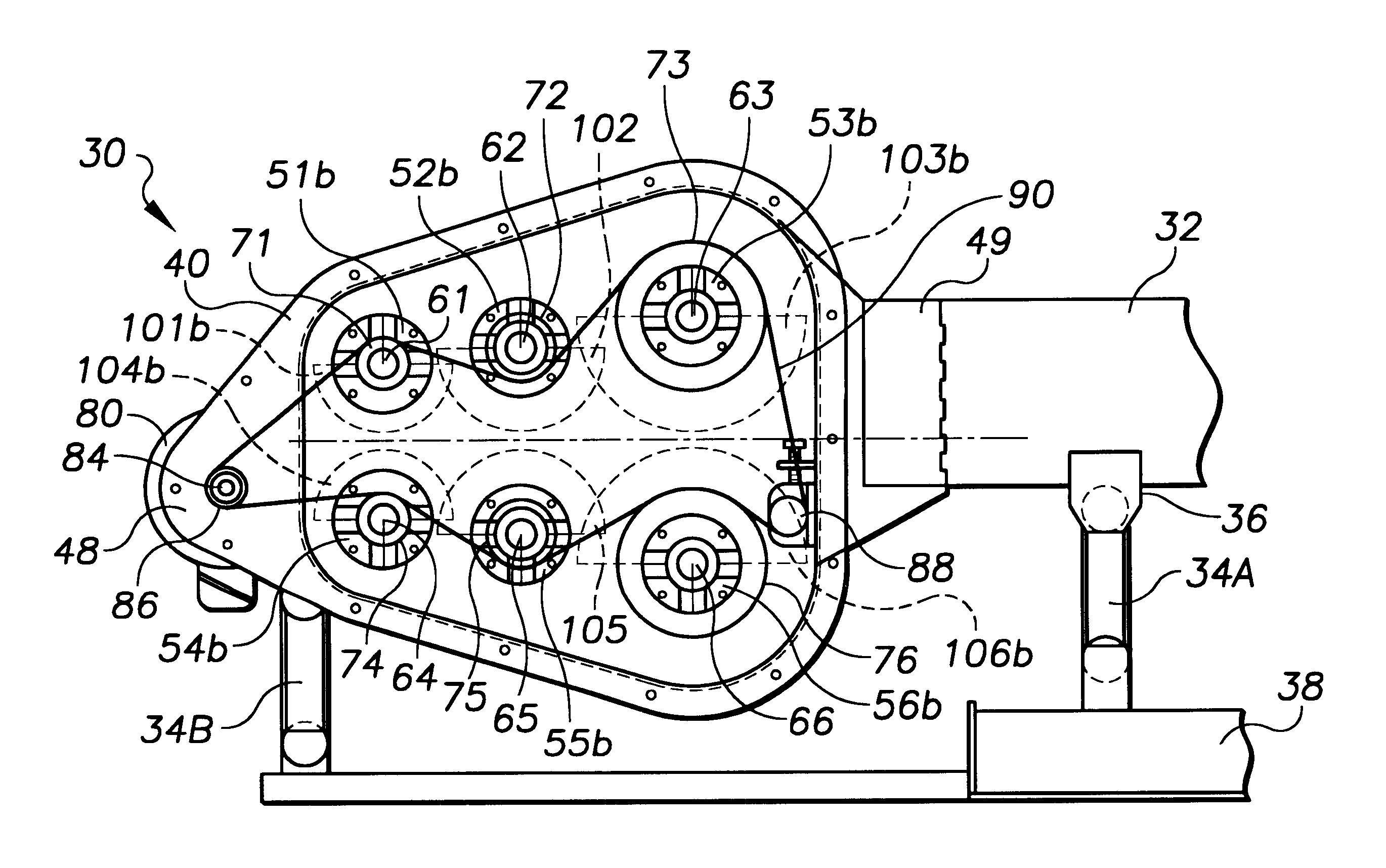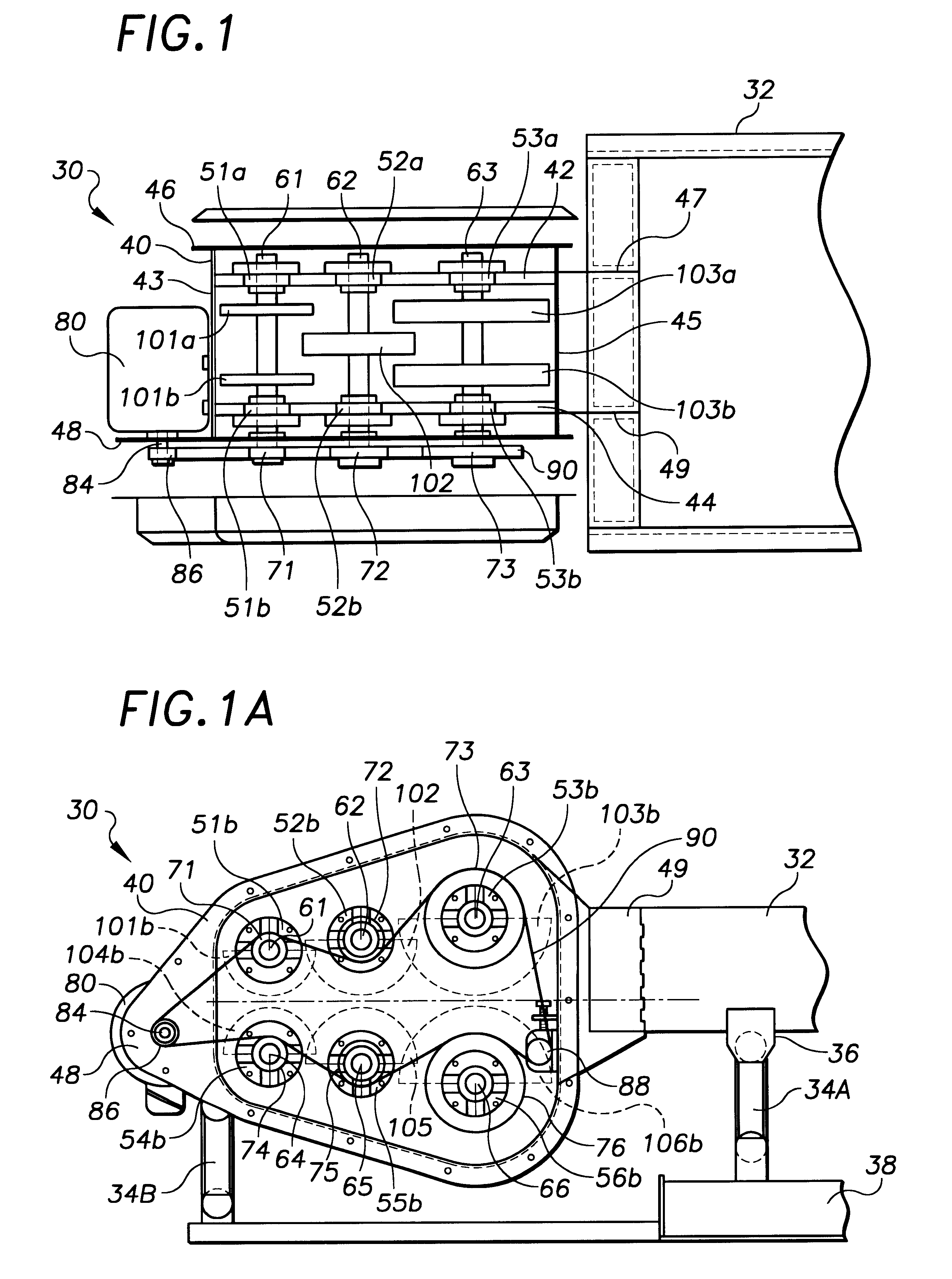Differential motion conveyor drive
- Summary
- Abstract
- Description
- Claims
- Application Information
AI Technical Summary
Benefits of technology
Problems solved by technology
Method used
Image
Examples
Embodiment Construction
The present invention is a differential motion conveyor drive employing at least six drive shafts carrying eccentric weights that are preferably selected to correspond to the terms of a Fourier series in order to achieve optimal conveying efficiency.
FIGS. 1 and 1A depict a preferred differential motion conveyor drive 30 in accordance with the present invention as secured to an end of a conveyor trough 32. Although only a portion of the conveyor trough 32 is shown in the Figures, the construction of such a conveyor trough 32 is well known in the art. Generally, a conveyor trough 32 is an elongated member which receives material to be conveyed from a delivery conveyor (not shown) at a first or inlet end, and then conveys that material to a second or discharge end where the material to discharged to other processing equipment. Of course, the conveyor trough 32 may be open or closed, and of varying size and dimensions, such factors being largely dependent on the particular material bein...
PUM
 Login to View More
Login to View More Abstract
Description
Claims
Application Information
 Login to View More
Login to View More - R&D
- Intellectual Property
- Life Sciences
- Materials
- Tech Scout
- Unparalleled Data Quality
- Higher Quality Content
- 60% Fewer Hallucinations
Browse by: Latest US Patents, China's latest patents, Technical Efficacy Thesaurus, Application Domain, Technology Topic, Popular Technical Reports.
© 2025 PatSnap. All rights reserved.Legal|Privacy policy|Modern Slavery Act Transparency Statement|Sitemap|About US| Contact US: help@patsnap.com



